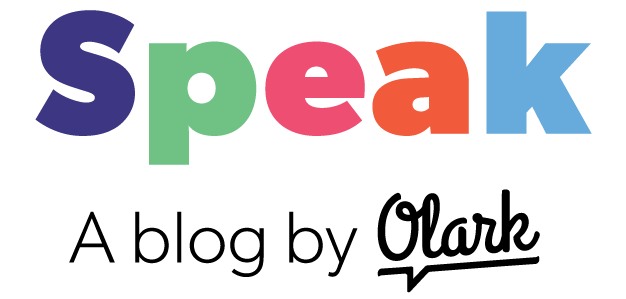
Poornima Vijayashanker is a software engineer and serial entrepreneur. She is the founder of Femgineer, an education company for tech professionals interested in entrepreneurship and leadership. She was the sole female engineer at Mint.com, which was acquired by Intuit in 2009. Post-acquisition, she decided to leave Mint and launched her own startup, BizeeBee, helping fitness studios and other membership based businesses across the world grow their business.
I spoke to Poornima about her new book, How to Transform Your Ideas into Software Products, and her experience as a "femgineer" and entrepreneur-engineer.
Poornima: For the past two years, I have been running Femgineer as a business. My primary product is this program called Lean Product Development Program where we help engineers and entrepreneurs go idea-to-prototype, help guide them and get their first paying customers. It's a pretty pricey program and a big time commitment. I decided in the middle of last year that I wanted to give a product that was a little bit more ... approachable. That's why I decided to put it into a book format.
Laure: And you've been working at Femgineer with primarily folks who are making early stage companies?
Poornima: Exactly. A fair number are engineers who want to be entrepreneurs or entrepreneurs who need help understanding the process from going from idea to a basic minimum viable product.
Laure: Are you working mainly with the engineering team at that point or more with people who don't have engineering experience?
Poornima: It's really a combination. Some are engineers who know how to build a product but they don't know how to necessarily build a product and get customers. I also work with entrepreneurs who don't know how to do the engineering themselves. They need to understand how to hire an engineer.
The challenge, I think, that most people come to us with is that they're like 90%, or sometimes 99%, focused on their product, their idea. They lose sight of almost everything else, as in they forget, "Hey, I've got to get customers." Or, "I've got to figure out who this product works for, define my customer base, and figure out how to get them to pay for the product." In most instances, people come and they're almost too fixated on their product. They're not thinking about anything else.
Laure: Gotcha. It's understanding how the product going out into the world as opposed to understanding their product itself.
Poornima: Exactly. People come in and they're so focused. They're constantly talking about feasibility. They're talking about, "How will I get this idea to a product?" They don't even stop to ask questions like, 'Who is it for?' or 'Is that person or that group of people, as in customers, willing to pay for it?'
Laure: That leads me to a natural question, which is "How do you advise folks or how have you seen the companies that you work with, have success in interacting with customers or engaging with customers?"
Poornima: First we advise identifying who your customer is. Part of that is taking the time to do a few exercises where they need to not only understand the customer's personality, but they need to make sure that that's the kind of person or group of people that they want to help. Really, digging into "Who is your ideal customer?" Because that's going to be the folks that are their early adopter base. Too often, people come in with an idea that "this is the latest fad we want to build for."
Pretty early on in the program, a couple things happen. They either decide, "Hey, I really am not passionate about this idea anymore." Or, "I'm not passionate about the user or the customer segment."
Once we've identified who the ideal customer is and that they're excited about them, then we can have them list out what the assumptions are that they think they need to test.
For example, I had a student, Hermione, who came in, and she said, "I think doctors have trouble getting patients." I said, "Great. What kind of doctor are we talking about?" She isolated it to private physicians. I told her, "go out and talk to five private physicians and ask them the basic question, 'Is getting customers an issue?'" She came back and said, "You know what? That's not the issue. They have enough customers coming in. The big issue is getting the folks that are coming in to actually pay them on time."
If they go out and actually do the field work, we'll first identify one segment. In this case, focusing on private doctors rather than any type of doctor because they have such a variety of needs was good. Then I try to see if the problem that the student or the founder feels is a problem is actually a problem.
You focus on building a solution for a problem, but too often people short circuit that and instead just dive into building because they're like, "Oh! Well, I see this is a problem, therefore, it must be a problem. Therefore, people must want to buy my solution."
Laure: When you first started Femgineer, did you have an interest in being a representative of female engineers or was it just that you happen to be female? What's the thinking around the activism side of it?
Poornima: I started it off actually as a blog back in 2007, and originally, it was like, "Poornimavijayashanker.com is really long and then no one's gonna want to be able to type that in!" I thought, 'I need to come up with a name that will just capture what I'm going to be talking about and since I happen to be female and an engineer.' I was just writing about engineering and entrepreneurship at that time, so I didn't initially have this strong pull of activism. That started to take shape over the last few years. One, because I think the community became more interested in it. Two, it is derived from a personal brand, so yeah, that hopefully answers your question.
Laure: Sure. Maybe if you can talk a little bit about how you got into technology as a woman, what that was like.
Poornima: Okay, I'll tell you the short version of the story. (Watch the TED talk for the longer version). Basically, I grew up around technology. My dad was a hardware engineer, and I accompanied him to work and I got really interested in the space because of the work that he was doing and then around the house, I would just do small projects, so I've always been kind of a tech geek.
When I got to college, I decided that I wanted to major in electrical engineering and computer science because I wanted to build things, so that's what got me into it. I didn't see being a woman in it as a limiting factor, I just kind of thought, "Hey, this is probably pretty male-dominated 'cause after all my, like, dad's in it," so it was sort of, I just accepted it. I didn't think anything of it.
Laure: Did you have a specific mentor who led you into doing more of the entrepreneur stuff after you were at Mint?
Poornima: No, that just came about naturally. When I moved to the Bay Area in 2004, it was one year before Google IPOed and I knew that there were a number of companies here, so I was always just curious and I always been curious about business in general.
A couple of years later, the opportunity came up where my friend from Duke, Aaron Patzer, the founder of Mint, was starting Mint and I wanted to join because I wanted to be at a startup, so it was a natural sort of evolution, but I didn't have a mentor or somebody that really got me into it. It was mostly my curiosity and I figured I would learn a lot being in that kind of environment.
Laure: As an entrepreneur, do you have a mentor now?
Poornima: I don't have one person that I consider a mentor. I have people, I have kind of like a group of people that I meet with periodically, sometimes it's once a month, sometimes it's once a year. I certainly learn from folks that are maybe six months or six years ahead of me, but I don't have a single person that I run to on and ask lots and lots of questions or set up a weekly standing meeting or anything like that.
I think part of it is just sort of the style in which I like to operate. I don't necessarily need that kind of ongoing relationship and I often work better when I get stuck on a problem and then think, "Okay, who can I go and ask for help that's in my network?" To me, it's like a little bit more of a casual relationship that evolves with people that have very specific talents or skills and I can learn from them.
Laure: So what are the challenges that you have now as an entrepreneur that you didn't have when you were an engineer?
Poornima: A couple of years ago, I discovered that I really sucked at sales. I actually went to a sales training program to learn the process for selling effectively, so that was a new skill that I developed.
The second, I think, is leadership. You can't just learn it, you have to do and practice and mold your style over time. I think both of those things have been challenges that I maybe didn't have as an engineer, but I now have as an entrepreneur.
Laure: You have your newsletter and you have the website, social media and videos, now a book, you're making tons of stuff. How do you actually manage to do that much stuff?
Poornima: That's funny because I see people, again, my mentors who are doing way more, so I actually, I'm like, "I don't think I'm doing all that much," but I appreciate you for saying that. I'm a big fan of discipline and I think part of this is my engineering background or maybe my upbringing, but I'm pretty disciplined when it comes to creating content weekly and monthly. I do have a schedule, so I typically, if I have to do a guest post or a publication, I will pitch them a story and then a few weeks before it's due, I'll set aside the time to write. I typically write like Monday, Tuesday, Wednesday, those are my three key writing days of the week because towards the end of the week, I tend to get tired or bogged down. I usually wake up in between 6 to 9am, and write..
I also do this thing where I don't hold back, I just get it out. One of the biggest challenges people have is when they start to doubt themselves, they start to critique themselves when they're not in a creative phase. That's the worst thing you can do, it's throttling your creativity, so you've just got to get it out. I typically will do a first rough draft, get everything out and then I'll do a second pass and make sure it makes sense.
Now, since I've been working on the book, I have an editor who does hold me accountable, but she's also good at refining the work that I do and I think that's also important for people to realize because too often, they think like, "Oh, the person with their name on it is the only one that did the work," but truthfully, I do have a team that's helping me whether its on a writing project or whether it's something else.
Laure: The book has so much information in it. How did you decide who to approach for these interviews? I know you interviewed Ben from Olark.
Poornima: I really wanted to have a few different personas. I wanted to have the persona of an early stage employee or a startup employee and so that's why I interviewed Brittany Forsyth at Shopify. She was employee number twenty there.
It was really important to have a female founder. It just so happens that actually both the women in the book, both Alyssa Ravasio (Hipcamp), as well as Julia Grace (Tindie), happened to have engineering backgrounds, so that was great. Alyssa's a little bit more on the business side, so I wanted to capture her thoughts, and Julia tends to be more engineering management-focused, so I wanted that.
For the other folks, I wanted to have someone who's outside of the valley, who had had a successful exit, and that is David Cummings (Pardot).
I wanted personas that aren't captured by common media sources because too often, there's just like one persona that's told over and over and over again. I wanted to expand people's horizons a little bit and give them a sense that "Hey, there's actually more than one type of founder and there's more than one type of person who's working to build this product or the startup," so that why I had a nice balance of both men and women and founders and non-founders, technical and non-technical.
In Ben's case, he's a founder who had bootstrapped, his business had started pretty young, had started it on the side, and he was like still building the business.
Laure: After writing this whole book, what would be a couple of takeaways be for companies that already have launched?
Poornima: You can't do enough when it comes to customer acquisition. I think a lot of times you will feel like, "Ohh, we're already doing like this and this and this and this," but if they don't have the revenue or if they don't have the business that they want, then that means they're not doing enough. It doesn't mean that they need to pursue more marketing channels or they need to hire more people, it's just they need to rethink their approach. There is not enough you can do when it comes to customer acquisition.
The second is, there's a process, there's multiple processes, there's a lot of different methodologies, but I think too often people decide that they're going to figure it all out as they do it. The problem with that is you get really into this trial-and-error mentality and when stuff doesn't work or you're not seeing results fast enough, then you start to burn out, get demotivated. That's why I always say, "Look, it doesn't matter whether you subscribe to my process somebody else's process or methodology, but you need to have some sort of framework because without that, you're just gonna be spinning your wheels."
Laure: What do you think that an engineer's role should be in communicating with customers based on your experience in engineering at BizeeBee or Mint?
Poornima: With BizeeBee, I was pretty heavily involved one with the team, but if I wasn't with the team, then I was with customers. I was in the field talking to prospects or getting existing customers to use the application, collecting feedback and then delivering it to engineers or working with engineers to create the product and outline how it should be.
For any engineer, listening to customers is really important, both in terms of existing ones and prospects. Mind you, they don't worry so much about "is this going to make money", that's something that the product team or business or marketing or sales needs to focus on, so engineers don't need to worry about that, we need to worry about feasibility.
Laure: What's one thing you'd like to get rid of in the startup world?
Poornima: There are so many things to get rid of, though. I think I would get rid of the high pressure mentality. I think a lot of people get too driven by deadlines that cause them to do a lot of, I wouldn't say bad things, but cause them to make decisions that might be detrimental to their own health or their business, where they won't eat properly or they won't get exercise and then they get really stressed, and make bad decisions again.
I think it's okay to go at your own pace. Certainly, you want to set milestones. Certainly, you want to make progress. You don't just want to sit on your hands, but I think too often people become such a slave to these aggressive deadlines that they lose sight of what it is they're doing, why it is they're doing it and what they want to, like the positive outcome they want to see.

